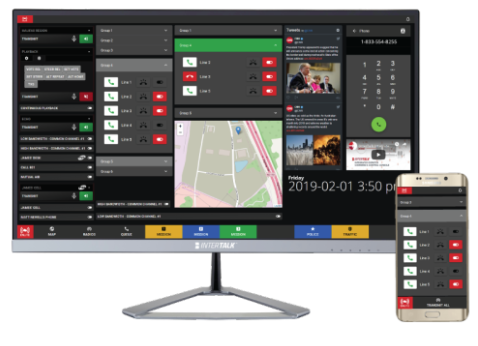This article was originally published in Iowa State University’s Human Computer Interaction April 2019 Newsletter.
The International Wireless Communications Expo (IWCE) took place March 4 – 8 in Las Vegas, NV. Historically, IWCE has focused on mission critical technologies (MCT). The MCT industry is largely concerned with public safety solutions in terms of providing faster, smarter, and more efficient technologies. As the population increases, ages, and evolves, and as new global threats emerge, first responders need increasingly more support to keep the public safe. Industries such as defense, emergency services, oil and gas, security firms, etc. leverage technologies such as big data, AI, drones, wearable technology, etc. to create tools that can reduce fatalities and crime by reducing first responder response time and increasing dispatcher situational awareness.
IWCE features hundreds of different companies, innovators, and educators that are showcasing products, giving keynotes, and conducting training. Intertalk is one of those companies. I was able to catch a keynote from Larry Hicks, VP of Intertalk, on how data can help public safety technologies. These technologies, Hicks says, should help dispatchers respond appropriately, and this means providing the right information, at the right time, and in the right place. For example, one use of this information is using natural language processing to prioritize dispatch calls. Because of ambulance shortages and the need for increasing infrastructure, individuals with potentially life-threatening problems may have to wait abnormally long times for emergency services. However, automation that can detect urgency by evaluating levels of stress in callers’ voices can assist human dispatchers reduce response times. I also spoke with Matthew MacDonald, Intertalk’s chief engineer, about their application of natural language processing (NLP). He said not only could it cut down on first responder response time, but it could also aid in the cognitive offloading of other attentionally demanding tasks. He used the example of a police officer calling in vehicle license plate numbers to check for potential threats. Currently, this is a manual process that involves call-taking and places attentional demands on both the dispatcher and the police officer. Automating this process would alleviate attentional demands on both ends, leaving resources to deal with more urgent situations.

Intertalk was at IWCE to pre-launch their mission-critical dispatching cloud-based solution, Enlite. Enlite incorporates robust call-taking technologies with data feeds from social media, weather and other environmental factors, traffic, and streaming video sources to an intelligent and customizable dashboard for dispatchers. Applications are not just in emergency response but would extend to municipal services such as transit, where traffic incident management (TIM) monitor roadway traffic and conditions. Event management, like monitoring crowd situations at large music festivals or public gatherings could also be a future application. Larry Hicks made the case for the continued need of a human element in the roles of dispatchers and responders. As HCI students and researchers, it is our job to support that human element and create automations that are supportive to our human communication abilities, cognitive limitations, and social interactions.
For more information:
https://intertalksystems.com/
https://tmt.knect365.com/mission-critical-technologies/
